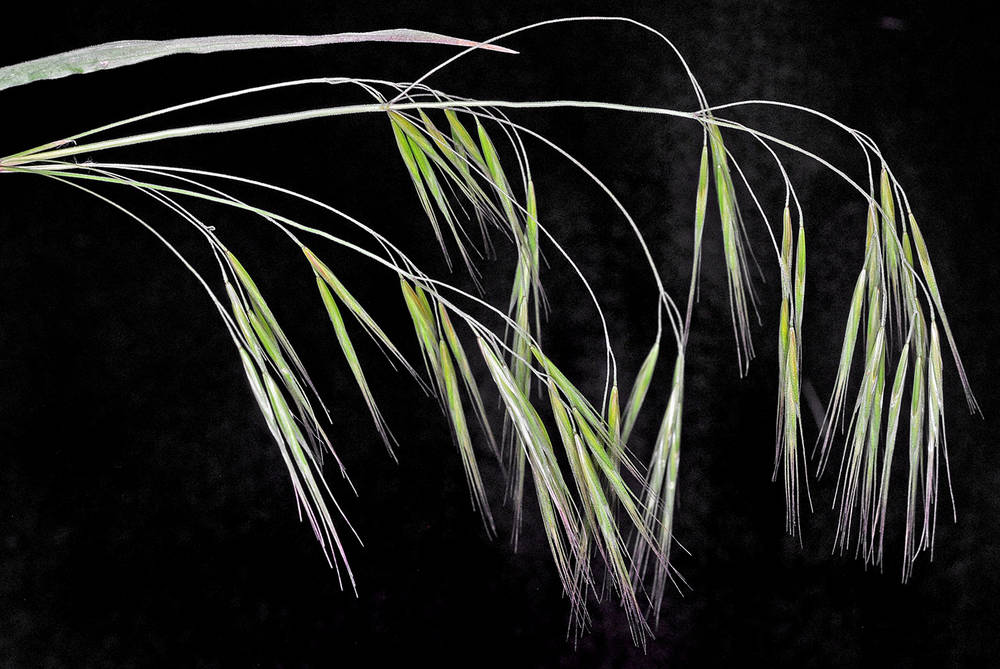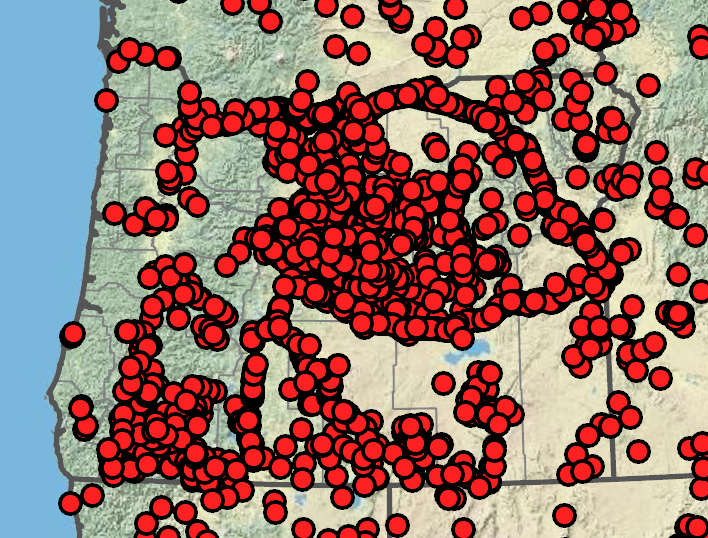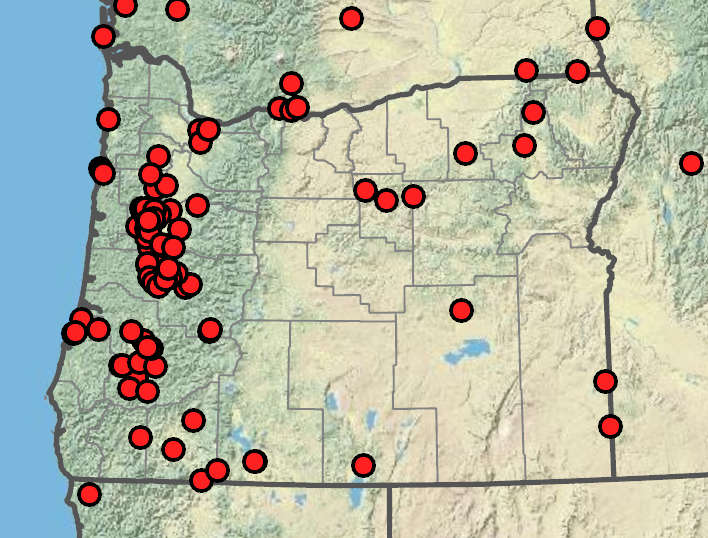Bromus tectorum
Bromus secalinus
cheatgrass, downy brome, downy chess
rye brome
puberulent.
sheaths densely and softly retrorsely pubescent to pilose; upper sheaths sometimes glabrous;
blades 1–16 cm × 1–6 mm, softly hairy on both surfaces.
sheaths glabrous or loosely pubescent and becoming glabrous;
blades 15–30 cm × 1–12 mm;
lower surfaces pilose or glabrous;
upper surfaces pilose.
5–20 × 3–8 cm; open, nodding;
branches 1–4 cm, drooping, 1-sided and longer than the spikelets, usually at least 1 branch with 4–8 spikelets.
5–23 × 2.5–12 cm; open, nodding;
branches spreading to ascending; lower branches slightly drooping; some pedicels longer than their spikelets.
10–20 mm, moderately laterally compressed, not densely crowded, 4–8 florets.
10–20 mm; ovoid-lanceolate or ovate, laterally compressed, not purple-tinged, with 4–9(10) florets;
floret bases visible at maturity;
rachilla internodes visible at maturity.
villous, pubescent, or glabrous;
lower glumes 4–9 mm, 1-veined;
upper glumes 7–13 mm, 3–5-veined.
scabrous or glabrous;
lower glumes 4–6 mm, 3–5-veined;
upper glumes 6–7 mm, 7-veined.
9–12 mm, lanceolate, glabrous or pubescent to pilose, 5–7-veined;
tips acuminate; hyaline; bifid, with teeth 0.8–2(3)mm, awned;
lemma awns 10–18 mm; straight.
6.5– 8.5(10) × 1.7–2.5 mm, elliptic; leathery, rounded over the back; backs glabrous, sometimes pubescent, scabrous to puberulent on the margins and near the tips, obscurely 7-veined;
veins usually not raised and thickened;
margins smoothly curved, inrolled at maturity;
tips acute to obtuse; bifid, with teeth less than 1 mm, awned;
lemma awns (0)3–6(9.5)mm; straight or flexuous, arising less than 1.5 mm below the lemma tips.
0.5–1 mm.
1–3 mm.
=14.
=14, 28.
Bromus tectorum
Bromus secalinus
Disturbed areas, sagebrush steppe, degraded grasslands, roadsides. 0–2400 m. BR, BW, Casc, Col, CR, ECas, Lava, Owy, Sisk, WV. CA, ID, NV, WA; throughout North America; worldwide. Exotic.
Bromus tectorum is a relatively short grass with drooping inflorescences. Similar B. sterilis and B. diandrus have longer glumes, lemmas, and awns, and spikelets that hang down at a shallower angle than those of B. tectorum. The introduction of B. tectorum to shrub steppe habitats during a time of massive overgrazing in the late 1800s has made restoration of native plant communities difficult or impossible, even where grazing no longer occurs. Fast-growing B. tectorum seedlings outcompete slower growing native grass seedlings for water in drying soils. At maturity, the awns make B. tectorum unpalatable to livestock.
Disturbed areas, ditches, moist meadows, shorelines. 0–1500m. BW, CR, ECas, Est, Sisk, WV. CA, ID, NV, WA; throughout most of North America; Europe. Exotic.
Mature B. secalinus is identified by the strongly inrolled lemmas enfolding the inrolled caryopses. The spreading florets expose the florets and rachilla joints.
Barbara Wilson, Richard Brainerd, Nick Otting
Barbara Wilson, Richard Brainerd, Nick Otting
- Local floras:
BC,
CA,
OR,
WA
- Local Web sites:
CalFlora,
CalPhotos,
Flora NW,
PNW Herbaria
WildflowerSearch
iNaturalist (observations)
USDA Plants Database
- LBJ Wildflower Center
- SEINet
- Plants of the World Online
- Encyclopedia of Life
- Wikipedia
- Google Image Search
- Local floras:
BC,
CA,
OR,
WA
- Local Web sites:
CalFlora,
CalPhotos,
Flora NW,
PNW Herbaria
WildflowerSearch
iNaturalist (observations)
USDA Plants Database
- LBJ Wildflower Center
- SEINet
- Plants of the World Online
- Encyclopedia of Life
- Wikipedia
- Google Image Search




